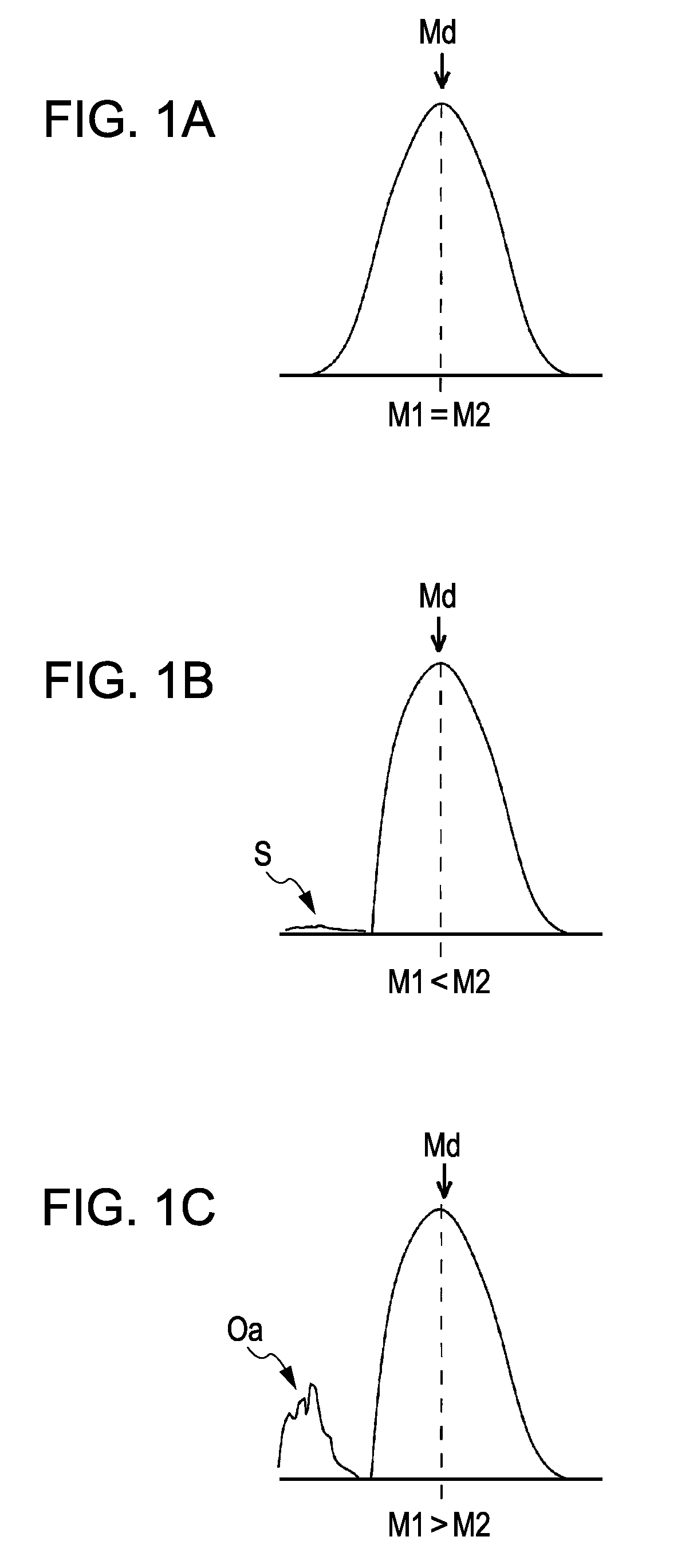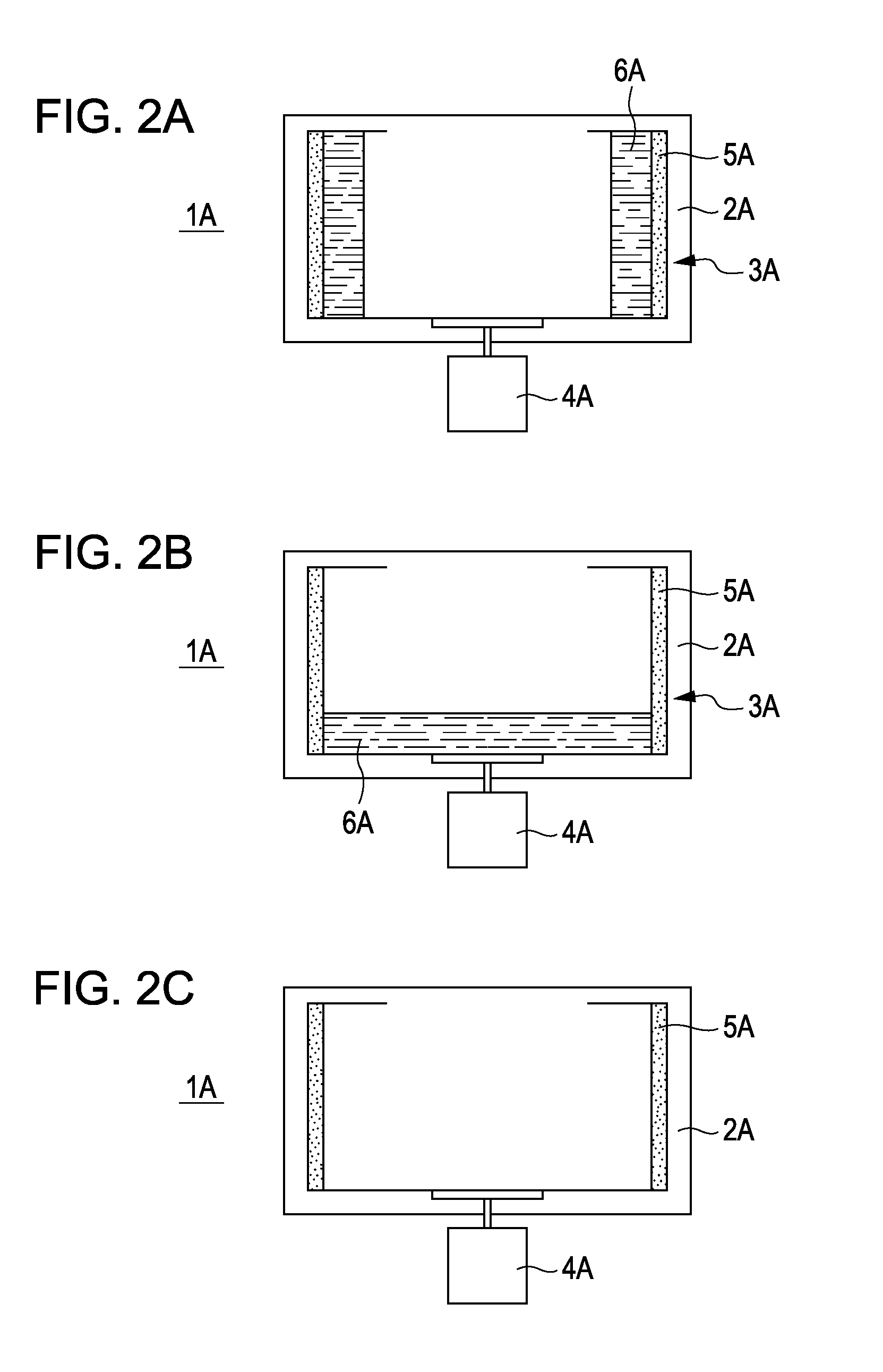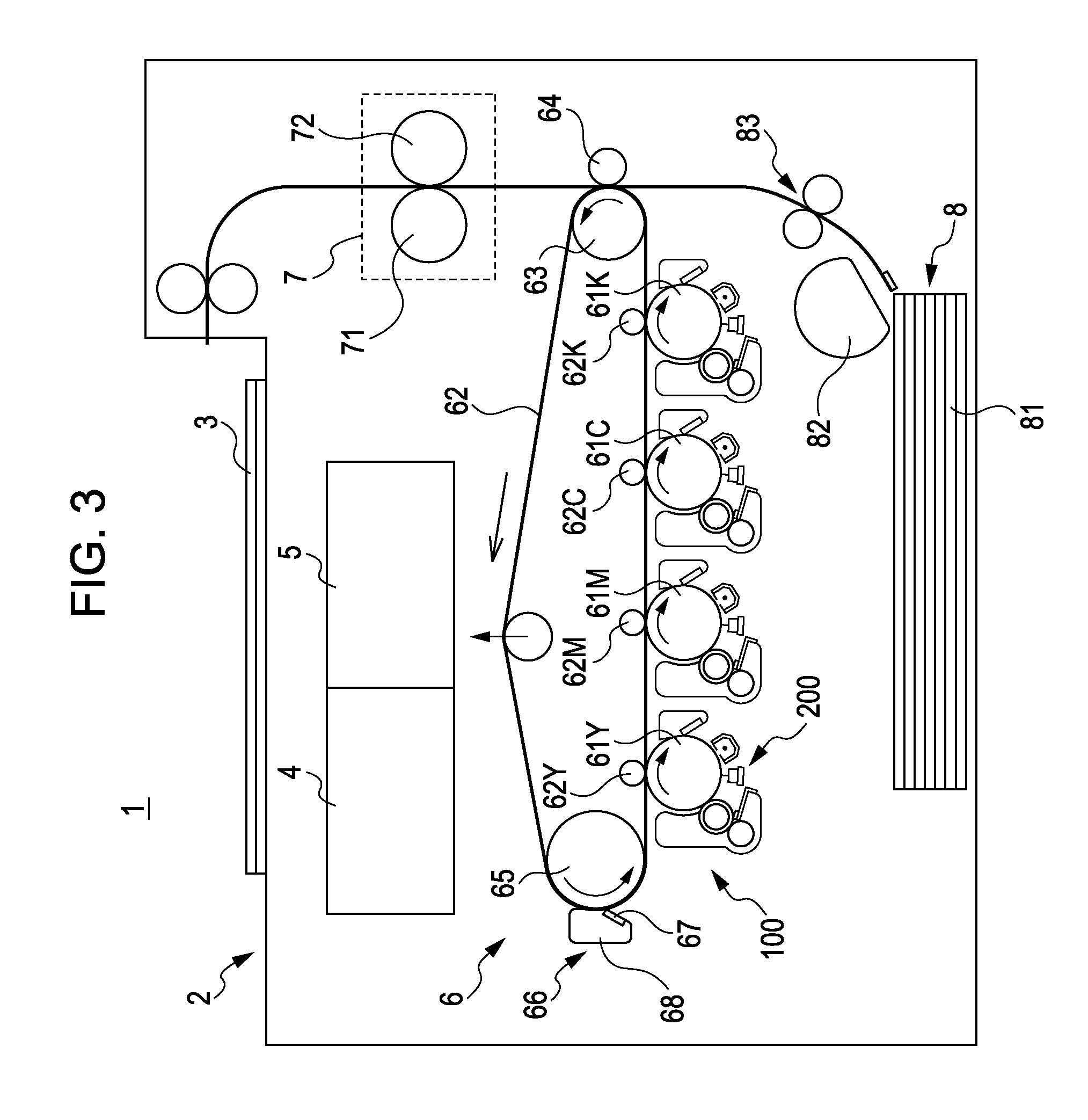Toner, toner production method, and image forming device using the same
a technology of toner and production method, applied in the field of toner, toner production method, and image forming device using the same, can solve the problems of long time for standing still, difficult control of toner by electric field, and large particle size of toner, and achieve the effect of suppressing the scattering of toner and excellent quality images
- Summary
- Abstract
- Description
- Claims
- Application Information
AI Technical Summary
Benefits of technology
Problems solved by technology
Method used
Image
Examples
example 1
Production of Toner
Synthesis of Crosslinked Polyester Resin for Binder Resin
[0196]Raw materials, such as acids, alcohol components, and catalysts in the following composition, were charged in a 50 L reaction pot, and reacted at 240° C. under a normal pressure and a nitrogen air current for 12 hours. Thereafter, the pressure was gradually reduced, and the reaction was continued at 1.33×103 Pa. The reaction was pursued by the softening point based on ASTM E28-517. When the softening point reached 160° C., the reaction was terminated.
Terephthalic acid3.9parts by massIsophthalic acid9.06parts by massEthylene glycol2.54parts by massNeopentylglycol4.26parts by massTetrabutyl titanate0.1part by massEpiclon 8300.3part by mass(Bisphenol F type epoxy resin, manufacturedby Dainippon Ink and Chemicals Ltd., Epoxyequivalent of 170 (g / eq))Cardula E0.1part by mass(Alkyl glycidyl ester, manufactured byShell Japan), Epoxy equivalent of 250 (g / eq)
example 2
[0219]In the unification process, when the unification proceeded to reach 4 μm, the stirring rate was increased to 120 min−1, the stirring was continued for 30 minutes, 0.1 m3 of water was added dropwise, and then the unification was stopped.
[0220]Thereafter, classification and drying were performed in the same manner as in Example 1, and thereafter an evaluation test was performed in the same manner as in Example 1. The results are shown in Table 1.
example 3
[0221]A toner was prepared in the same manner as in Example 2, except that, after classifying and drying, 0.2% by mass of silicone oil (KF-96-200CS manufactured by Shin-Etsu Chemical Co., Ltd., 100% dimethyl polysiloxane) having a kinetic viscosity at 25° C. of 200 mm2 / s was added and an evaluation test was performed in the same manner as in Example 1. The results are shown in Table 1.
PUM
| Property | Measurement | Unit |
|---|---|---|
| Percent by mass | aaaaa | aaaaa |
| Percent by mass | aaaaa | aaaaa |
| Diameter | aaaaa | aaaaa |
Abstract
Description
Claims
Application Information
 Login to View More
Login to View More - R&D
- Intellectual Property
- Life Sciences
- Materials
- Tech Scout
- Unparalleled Data Quality
- Higher Quality Content
- 60% Fewer Hallucinations
Browse by: Latest US Patents, China's latest patents, Technical Efficacy Thesaurus, Application Domain, Technology Topic, Popular Technical Reports.
© 2025 PatSnap. All rights reserved.Legal|Privacy policy|Modern Slavery Act Transparency Statement|Sitemap|About US| Contact US: help@patsnap.com



